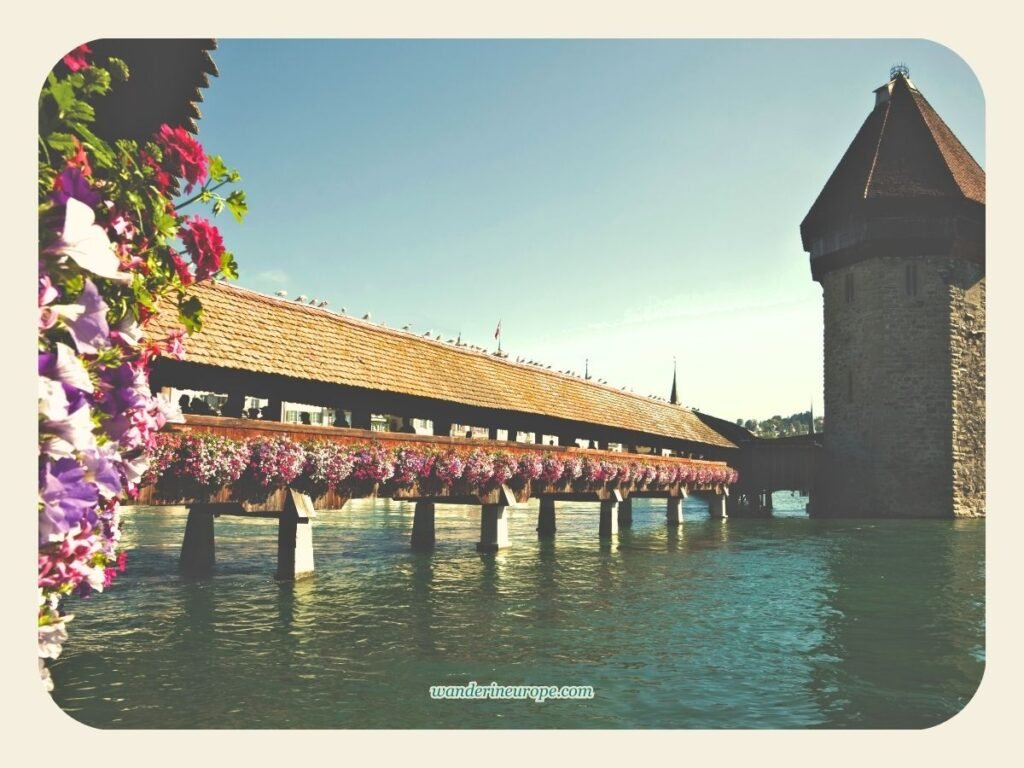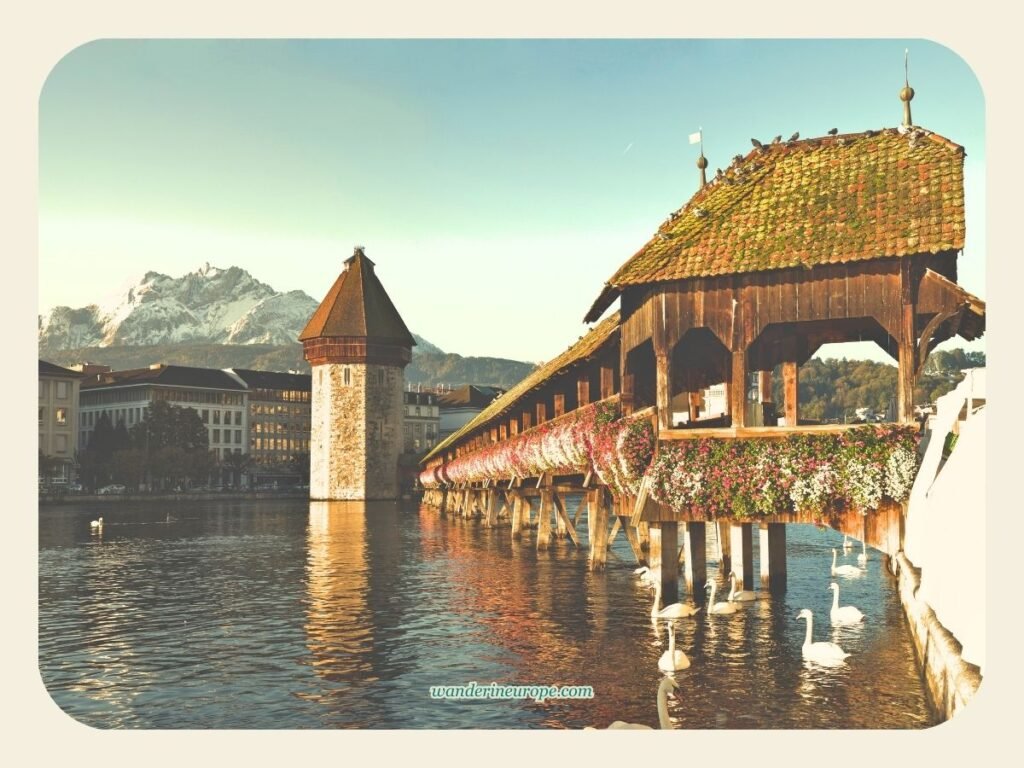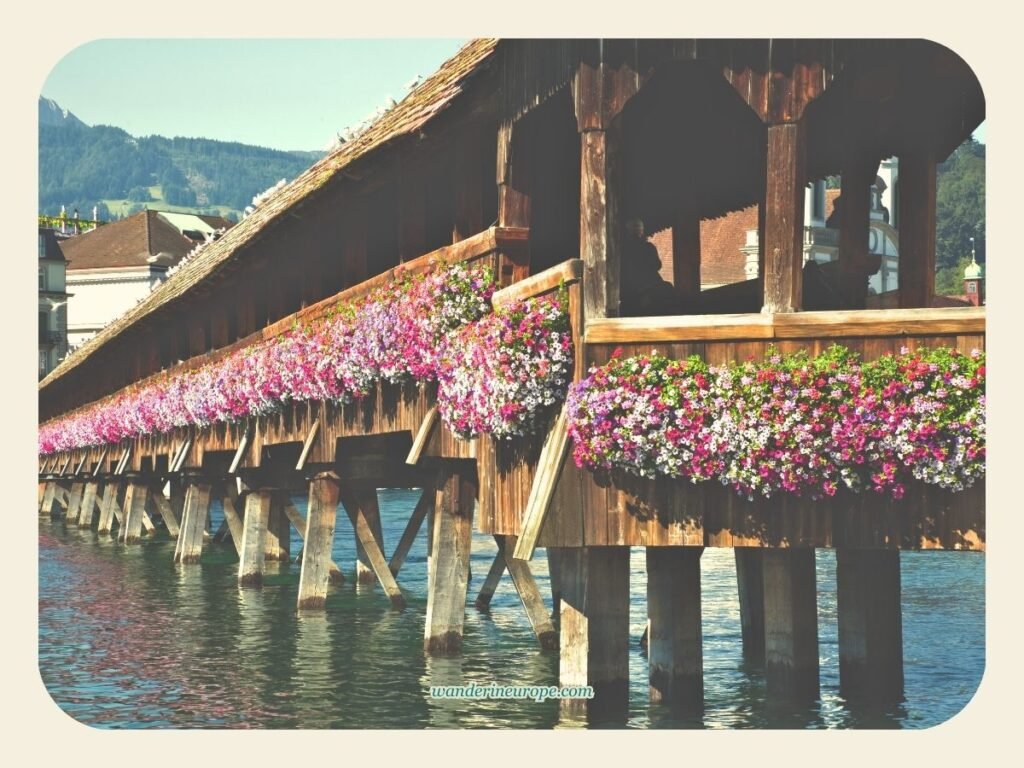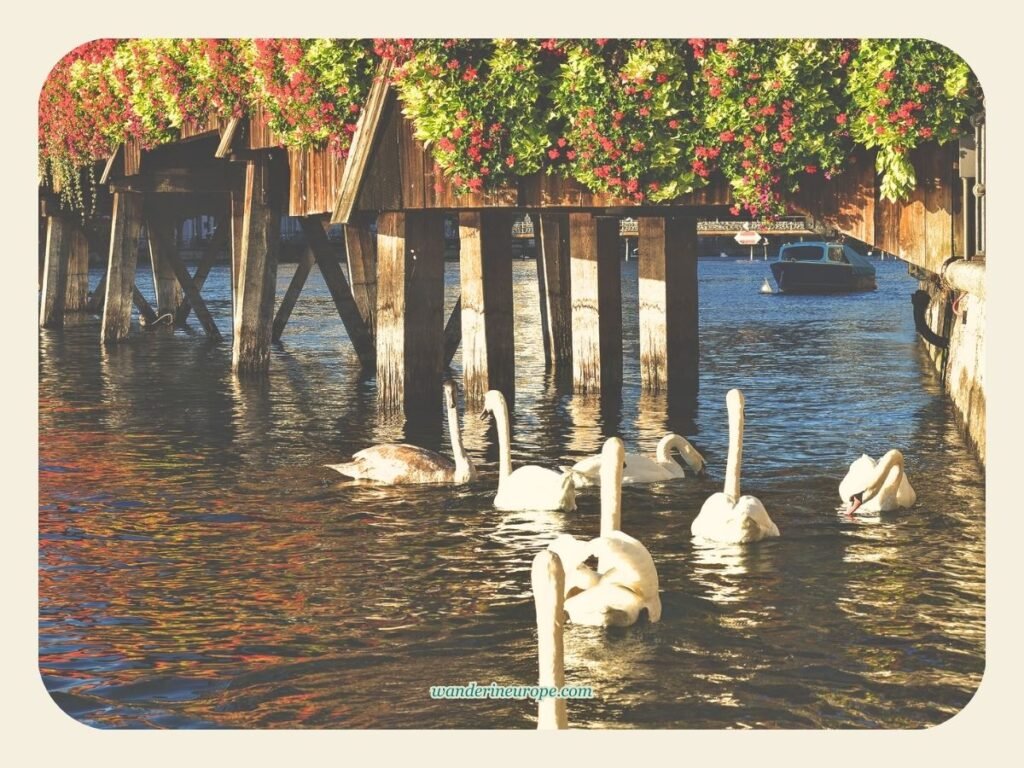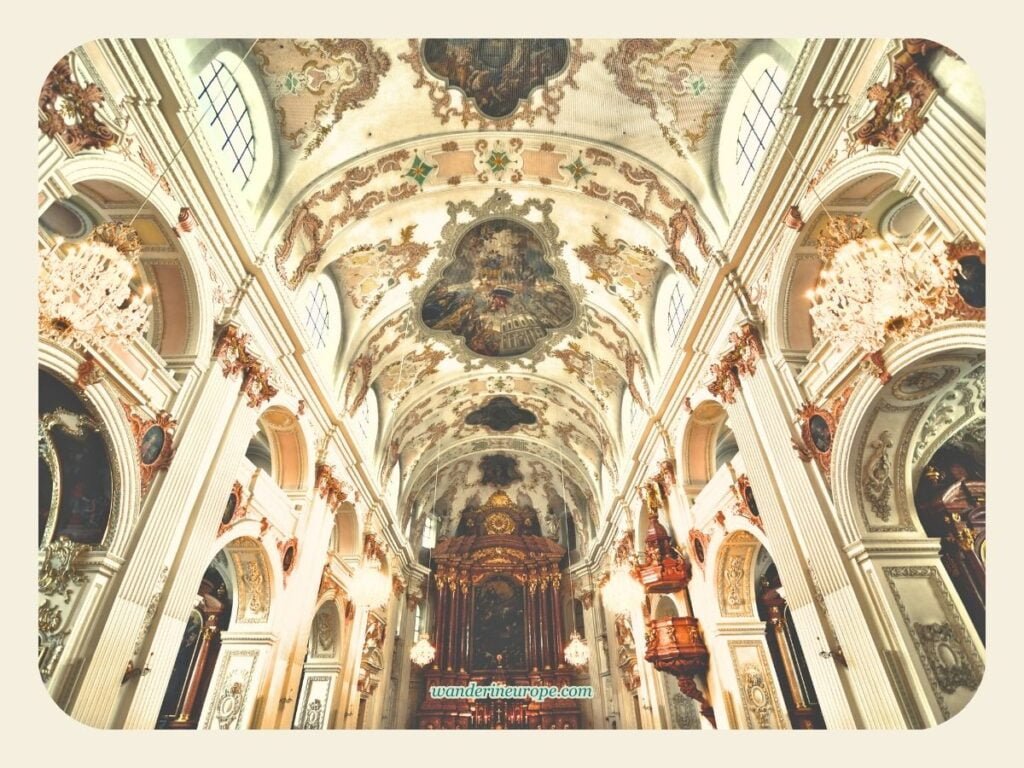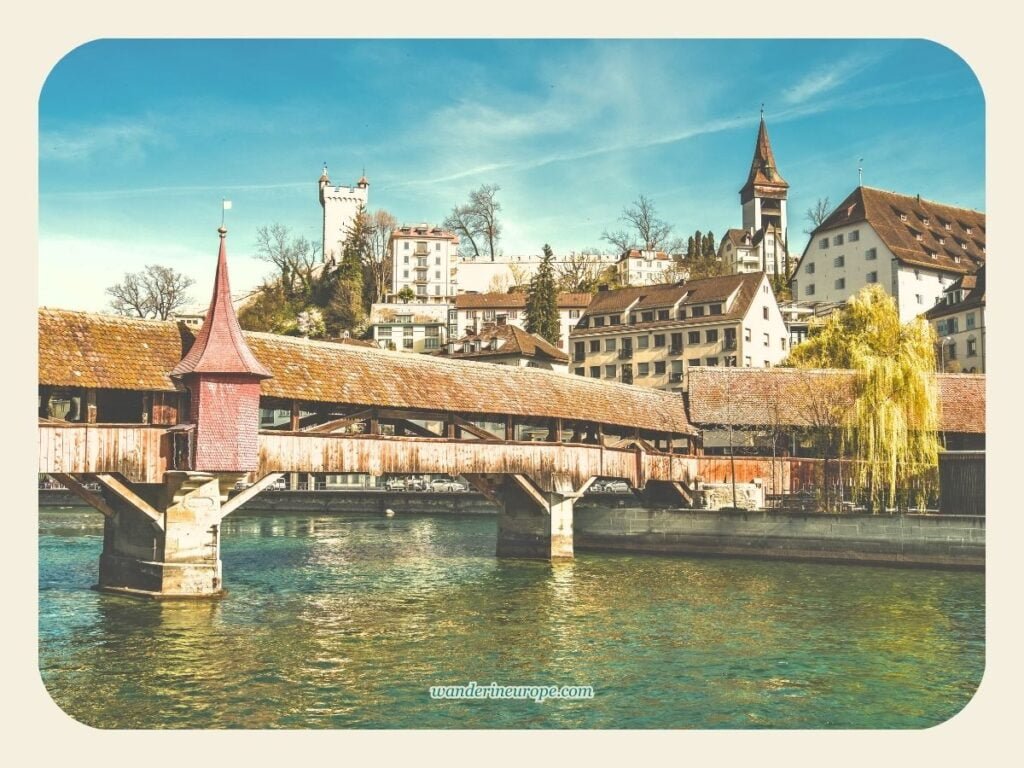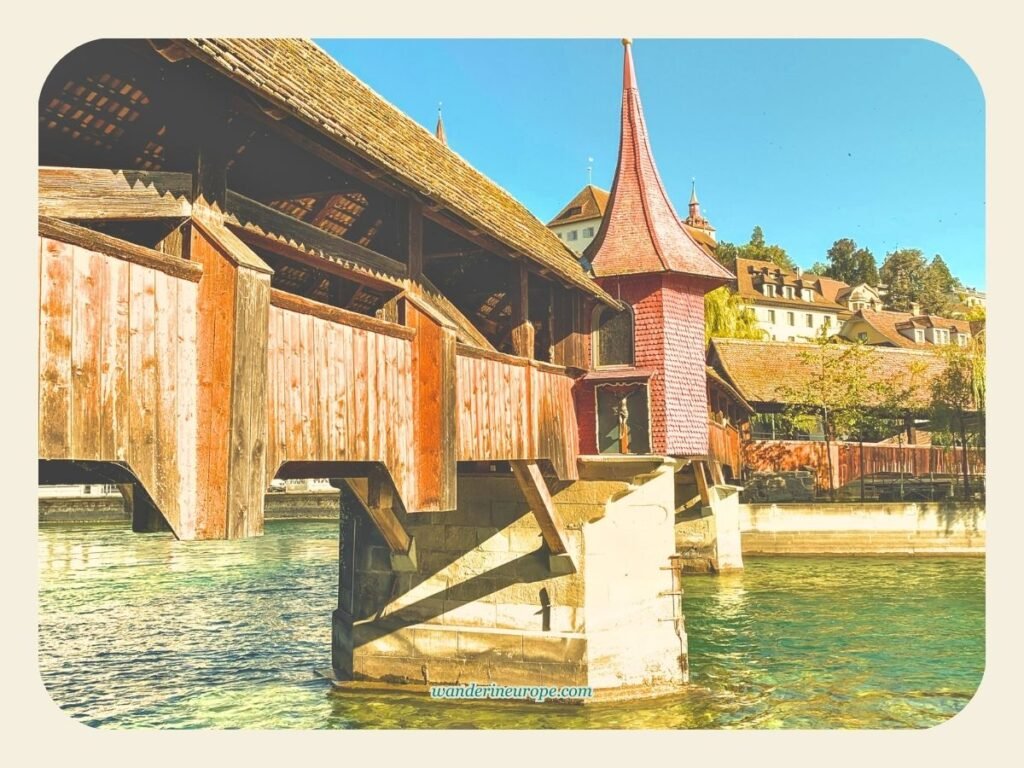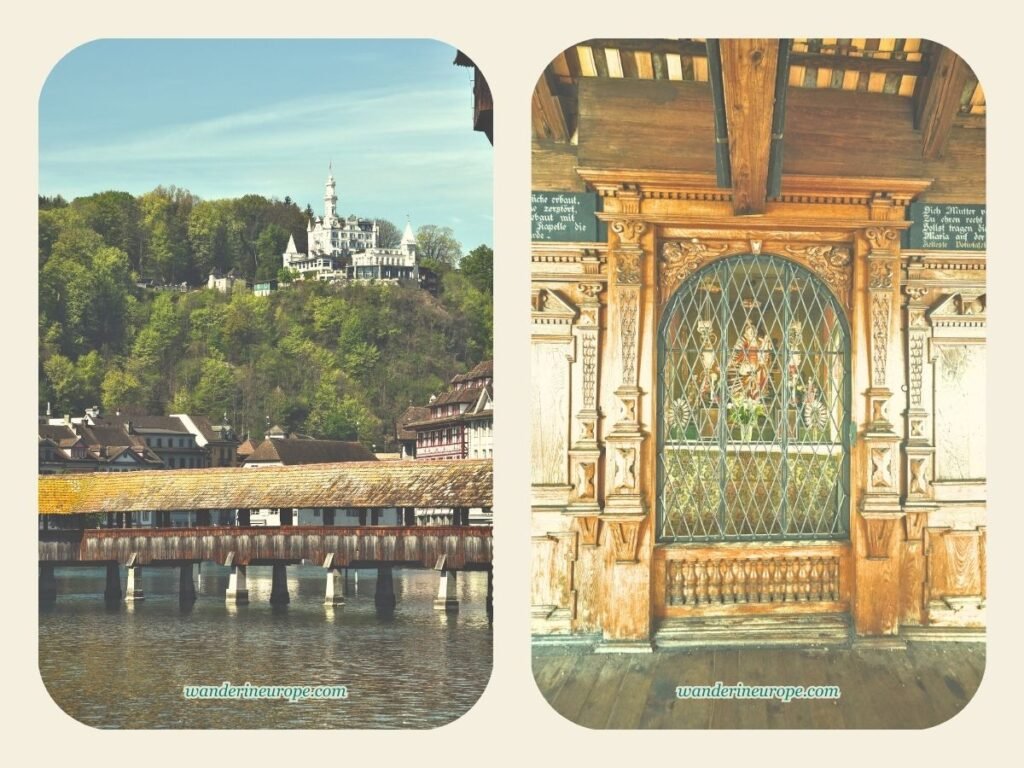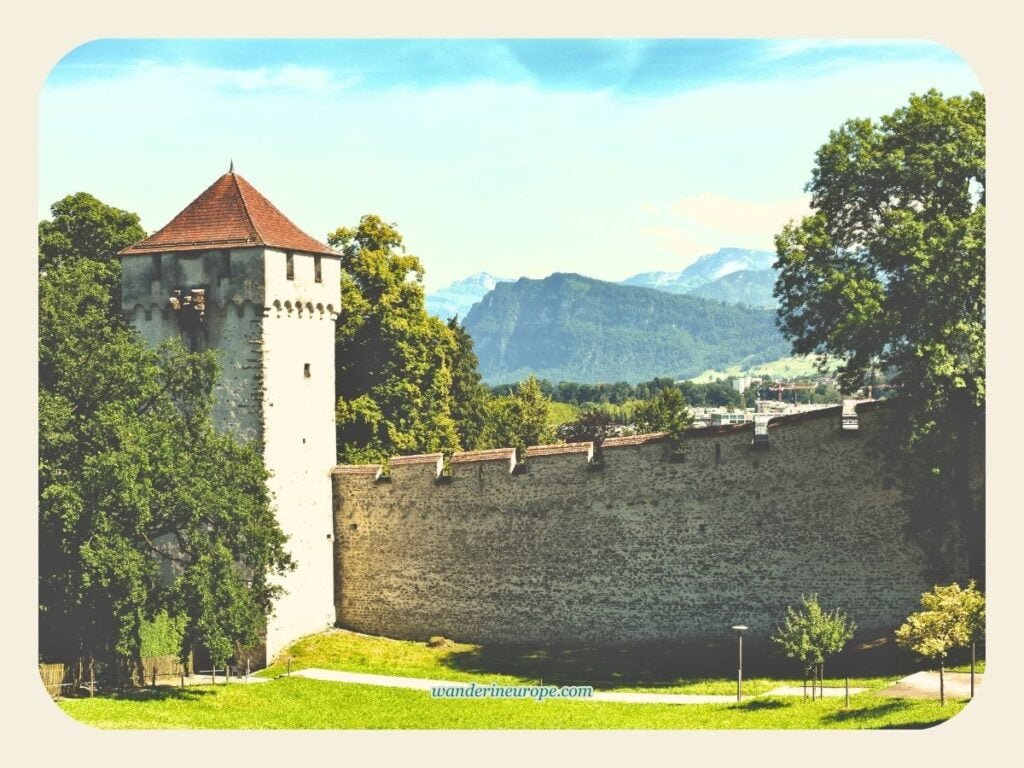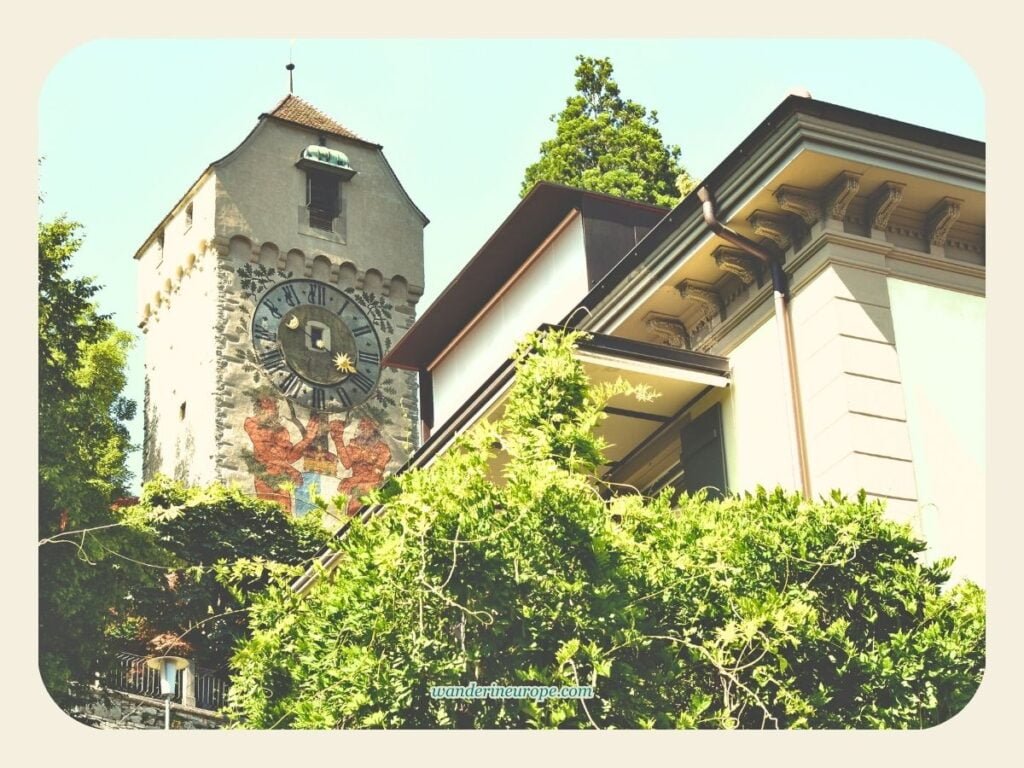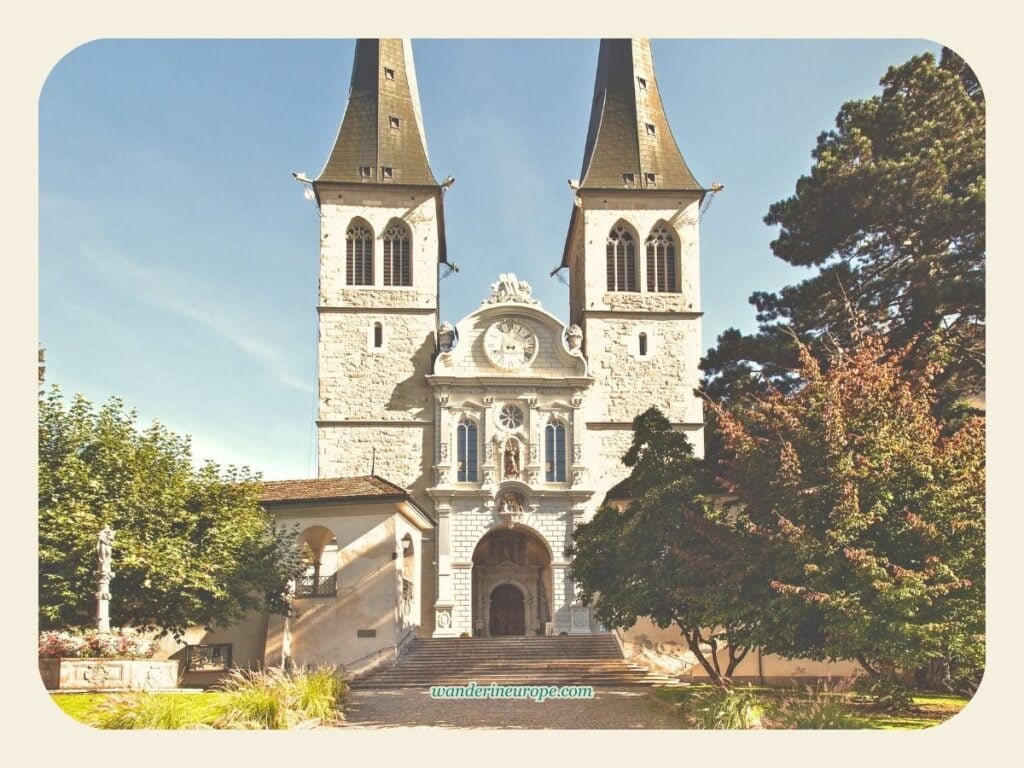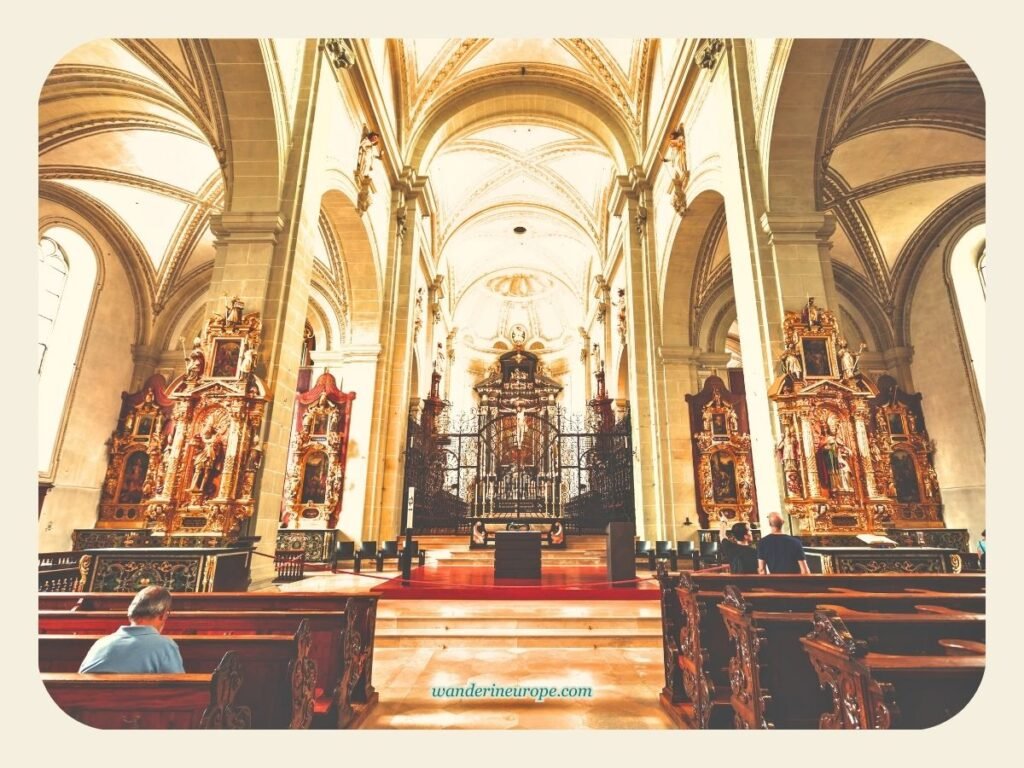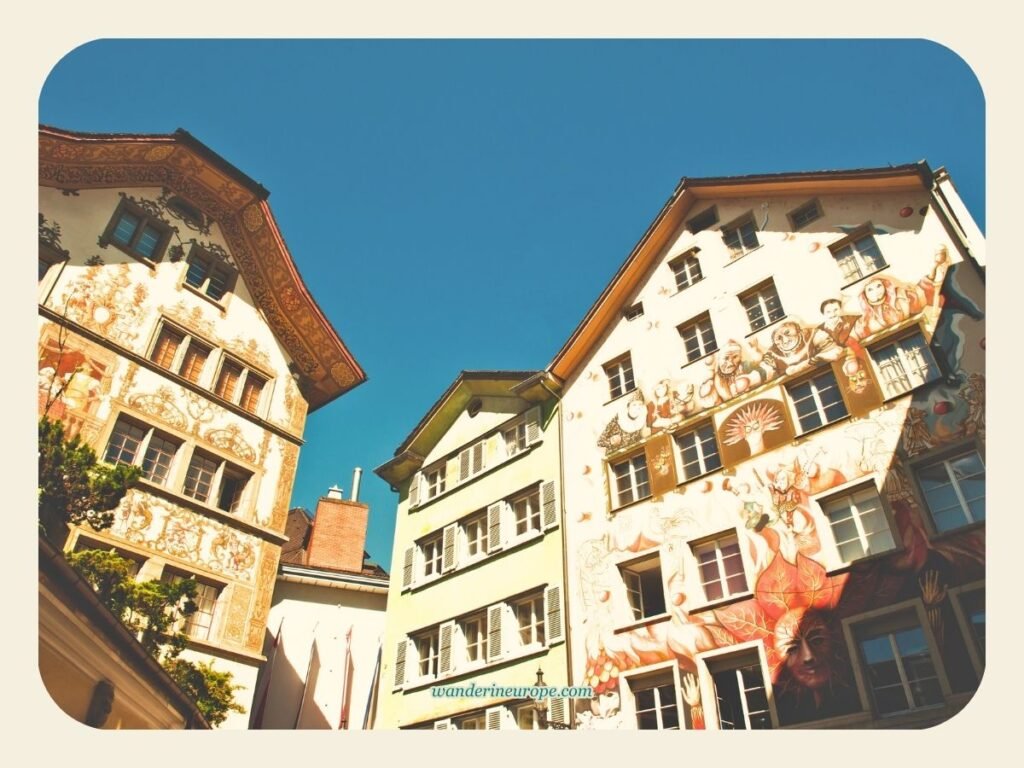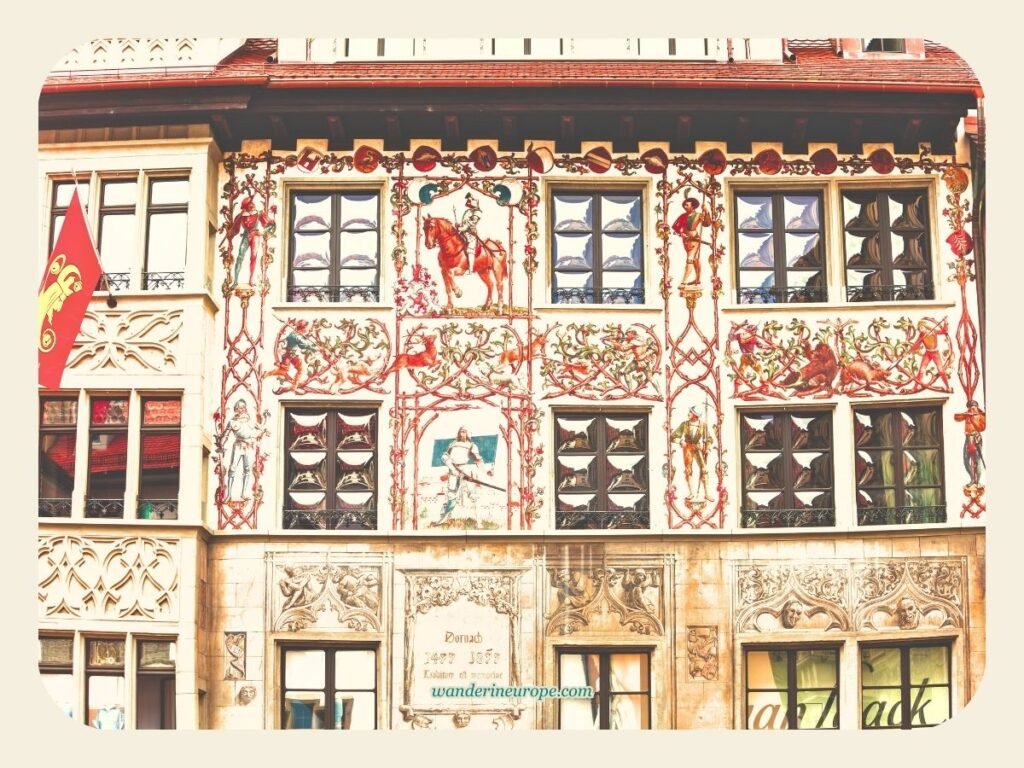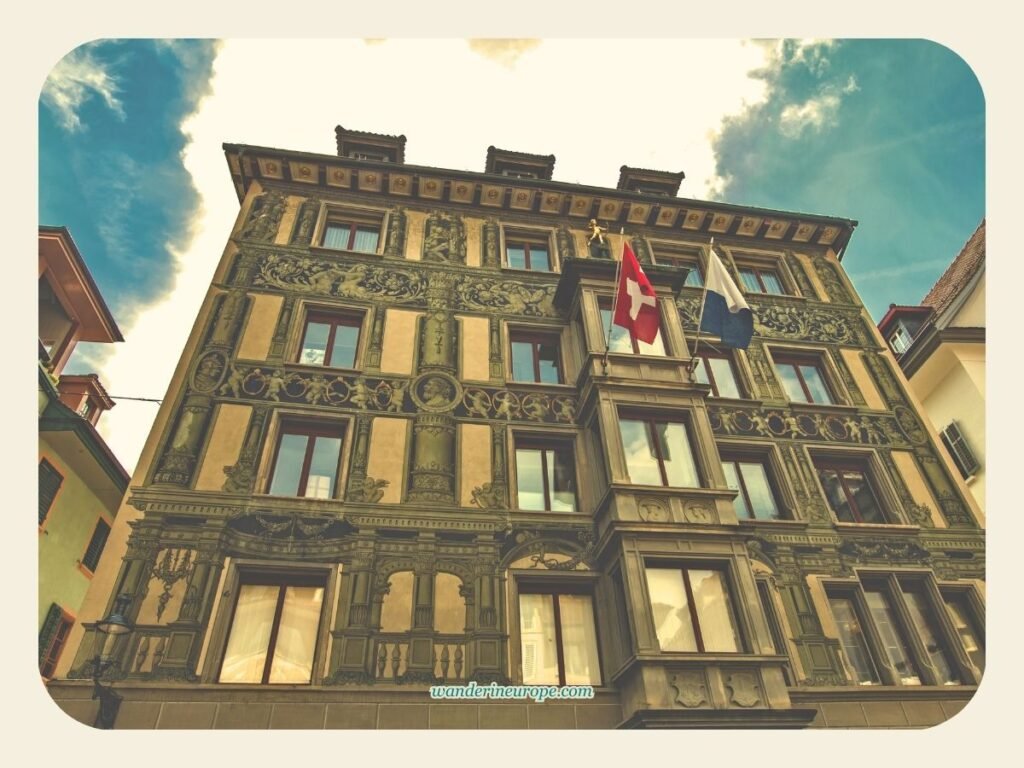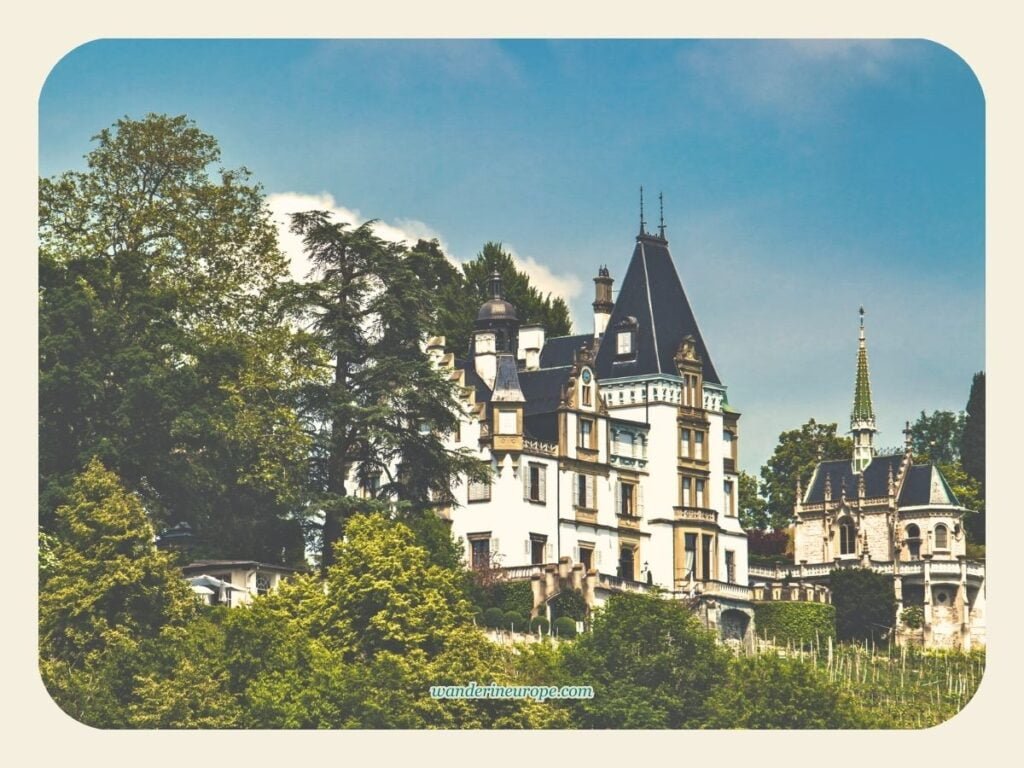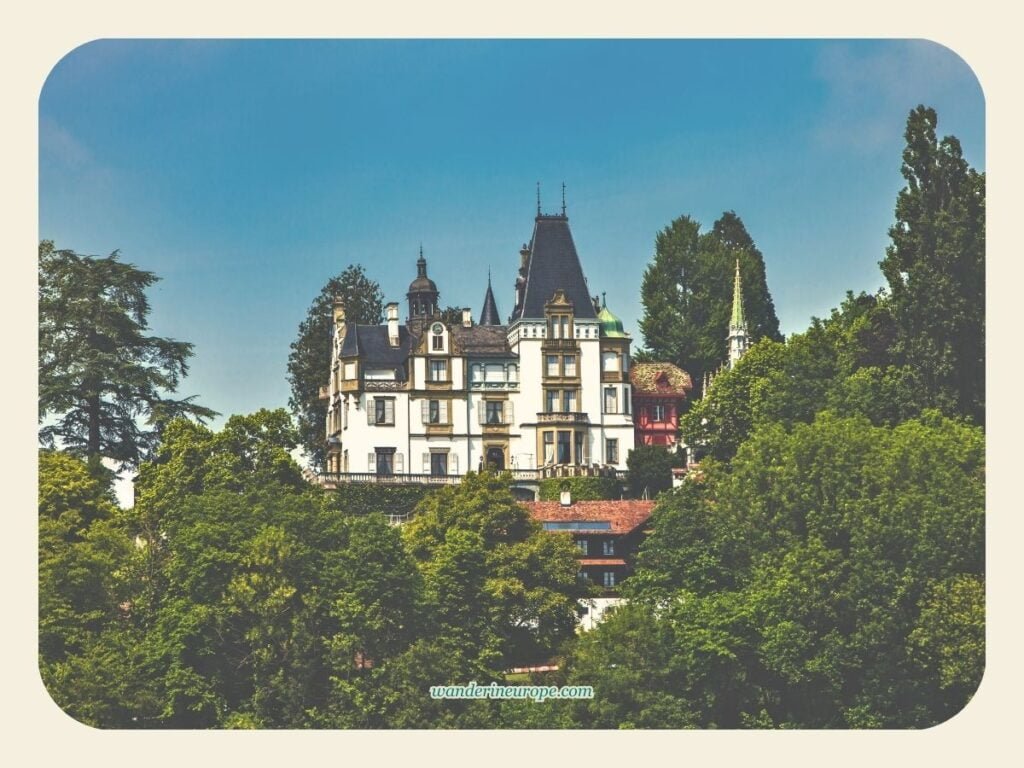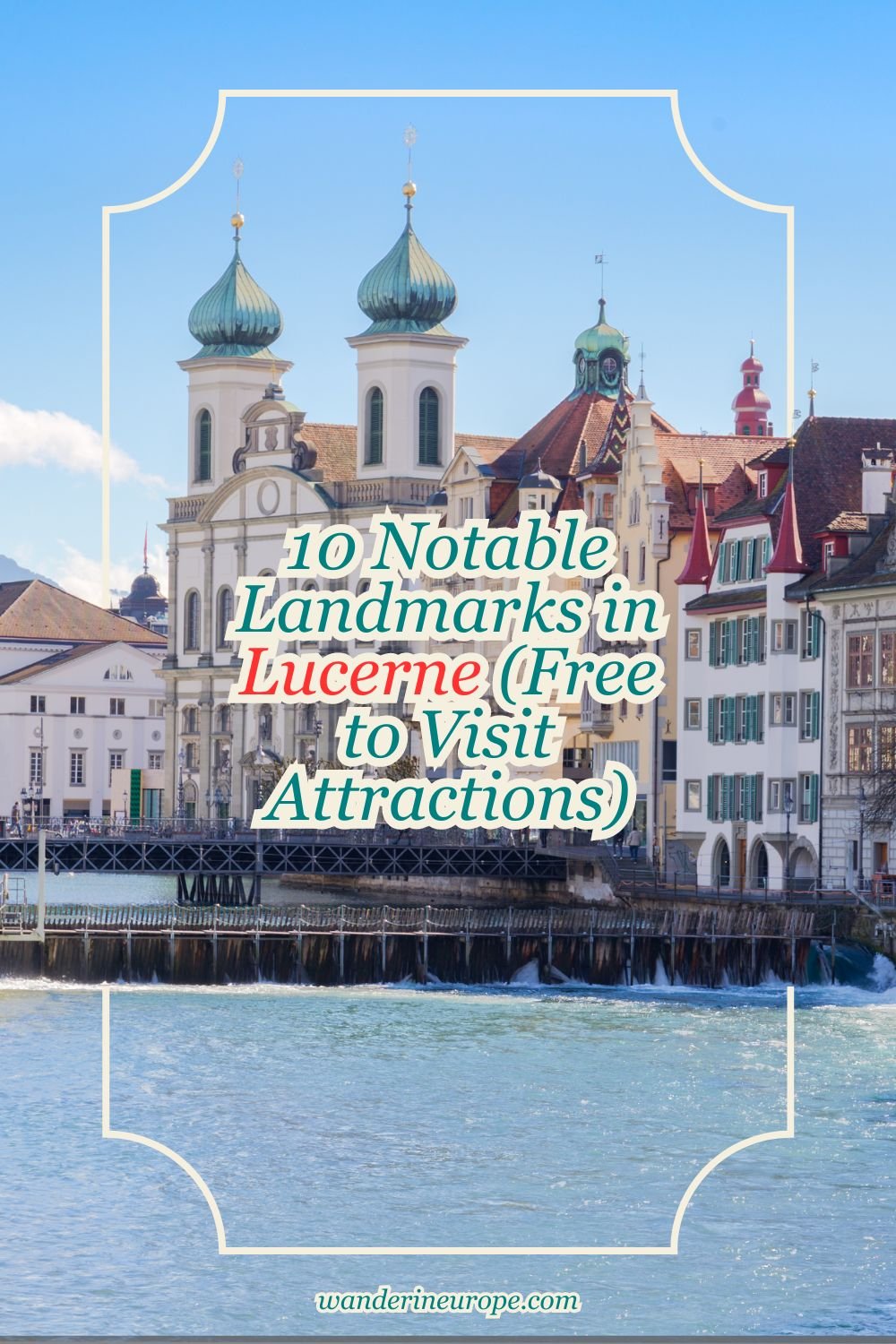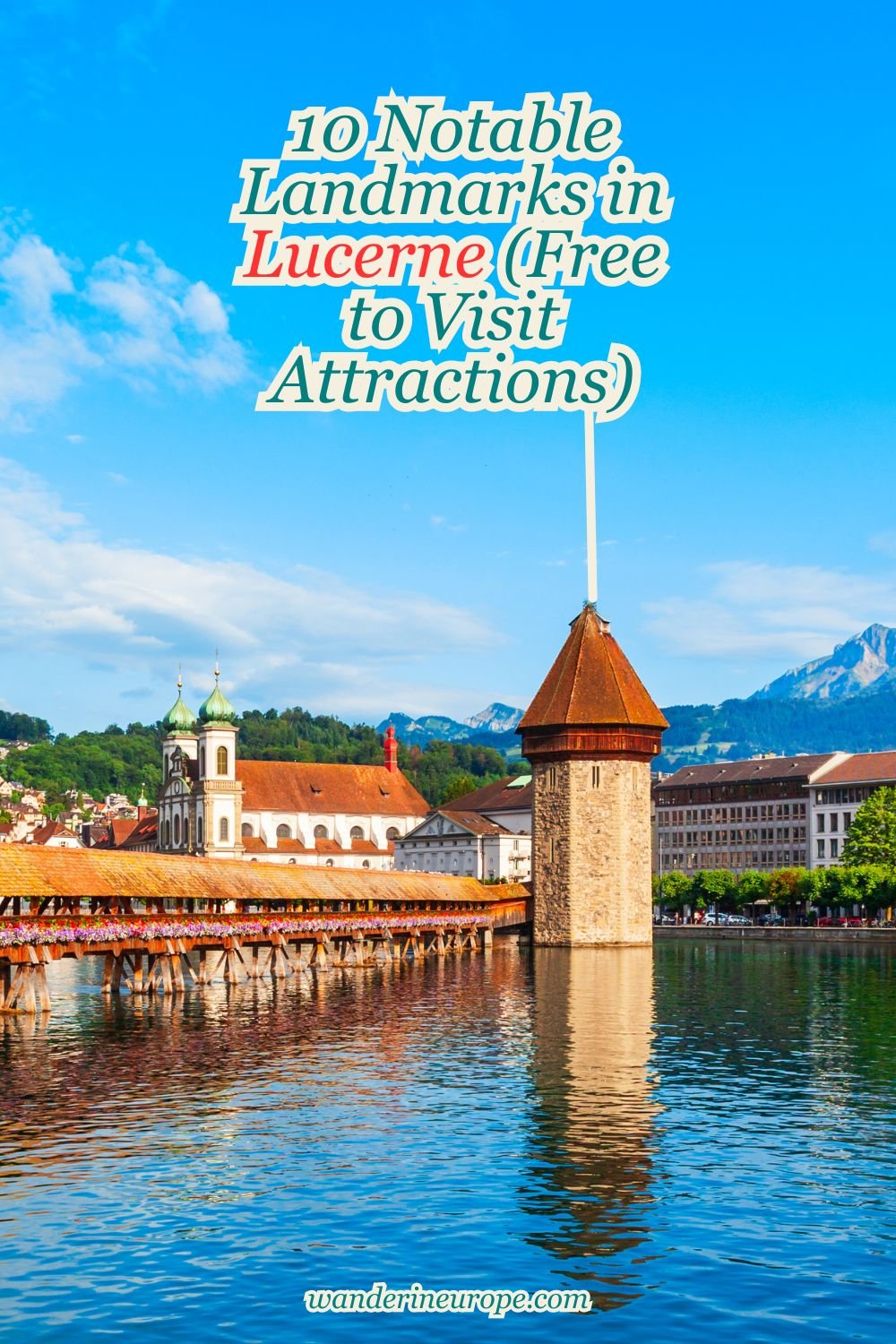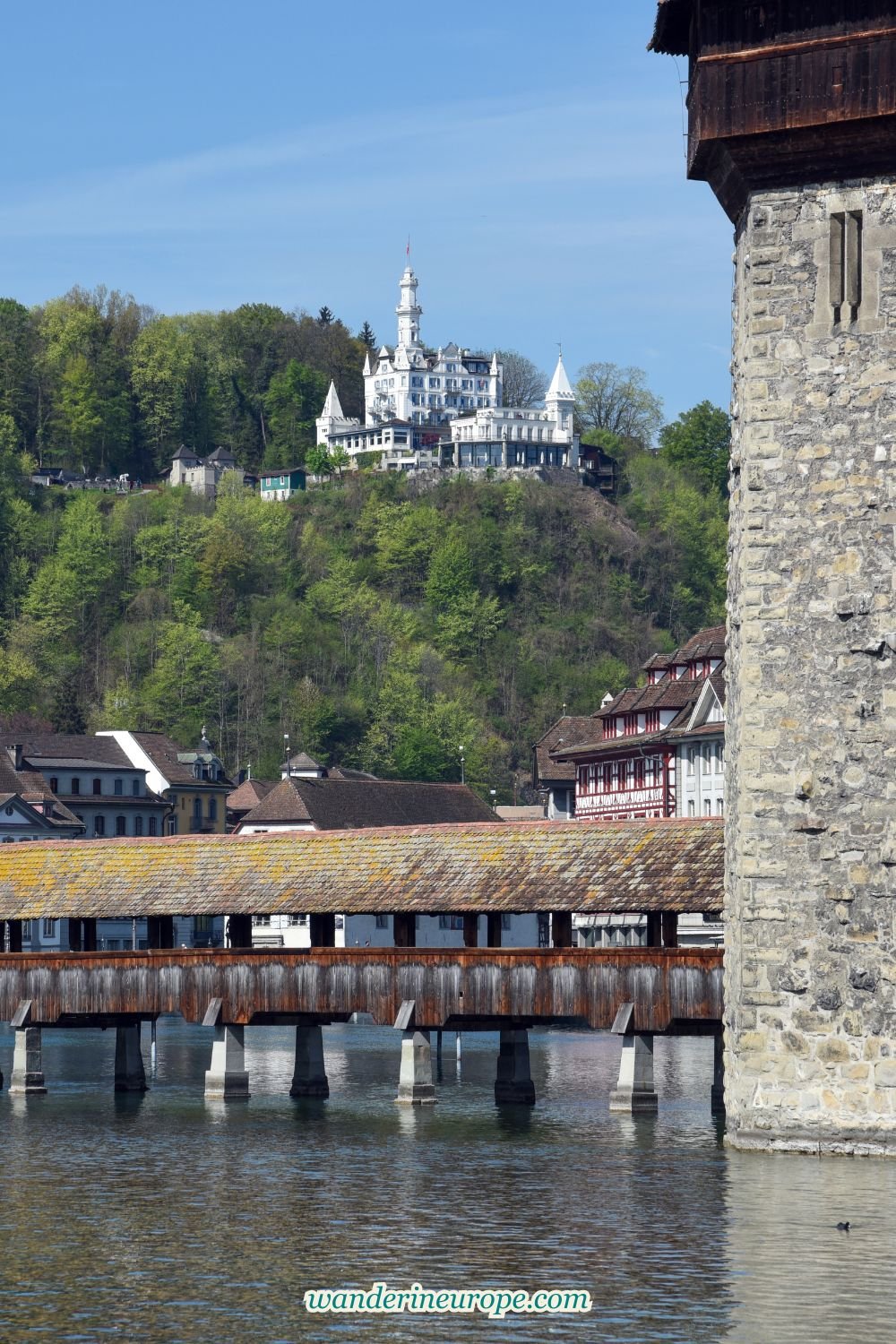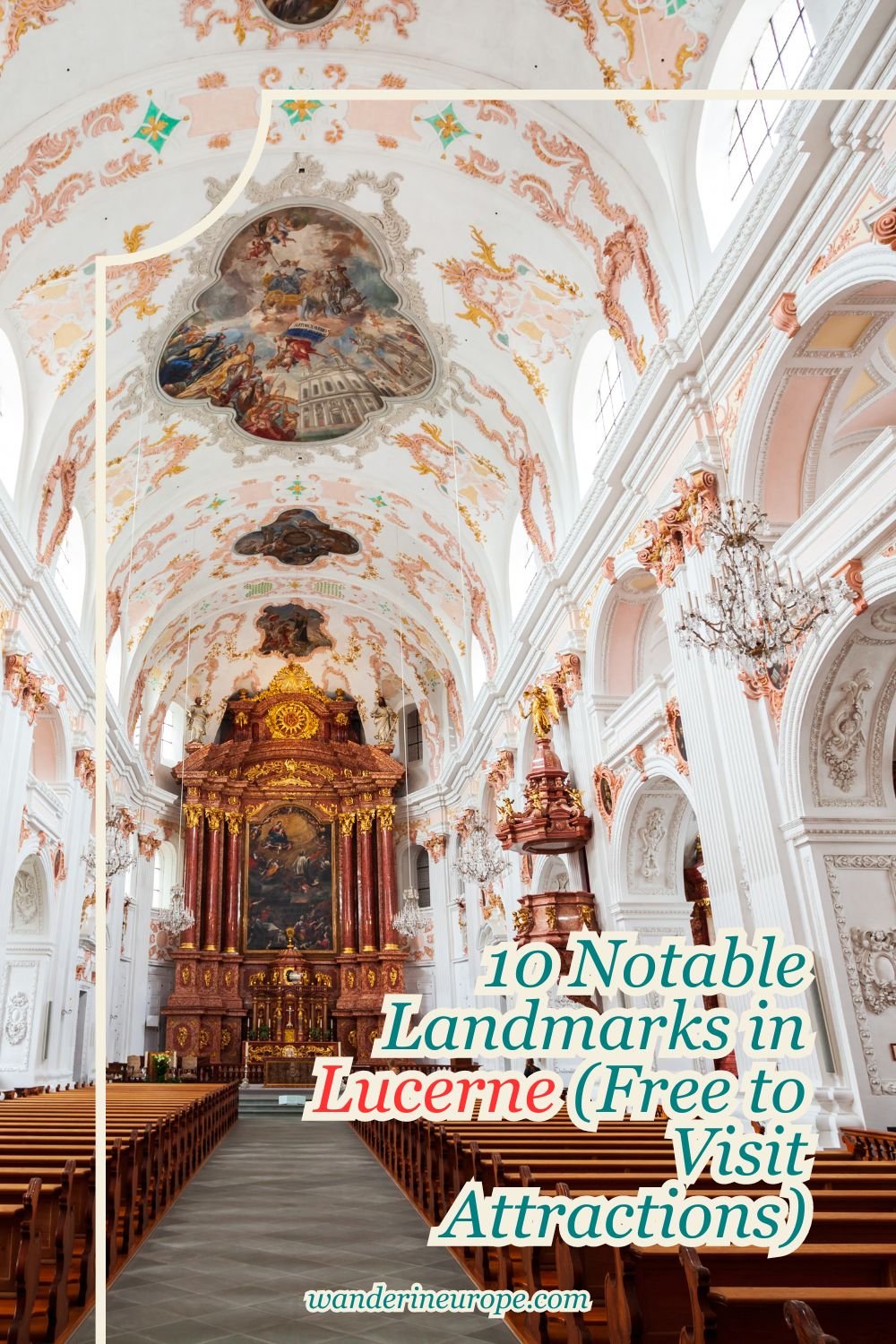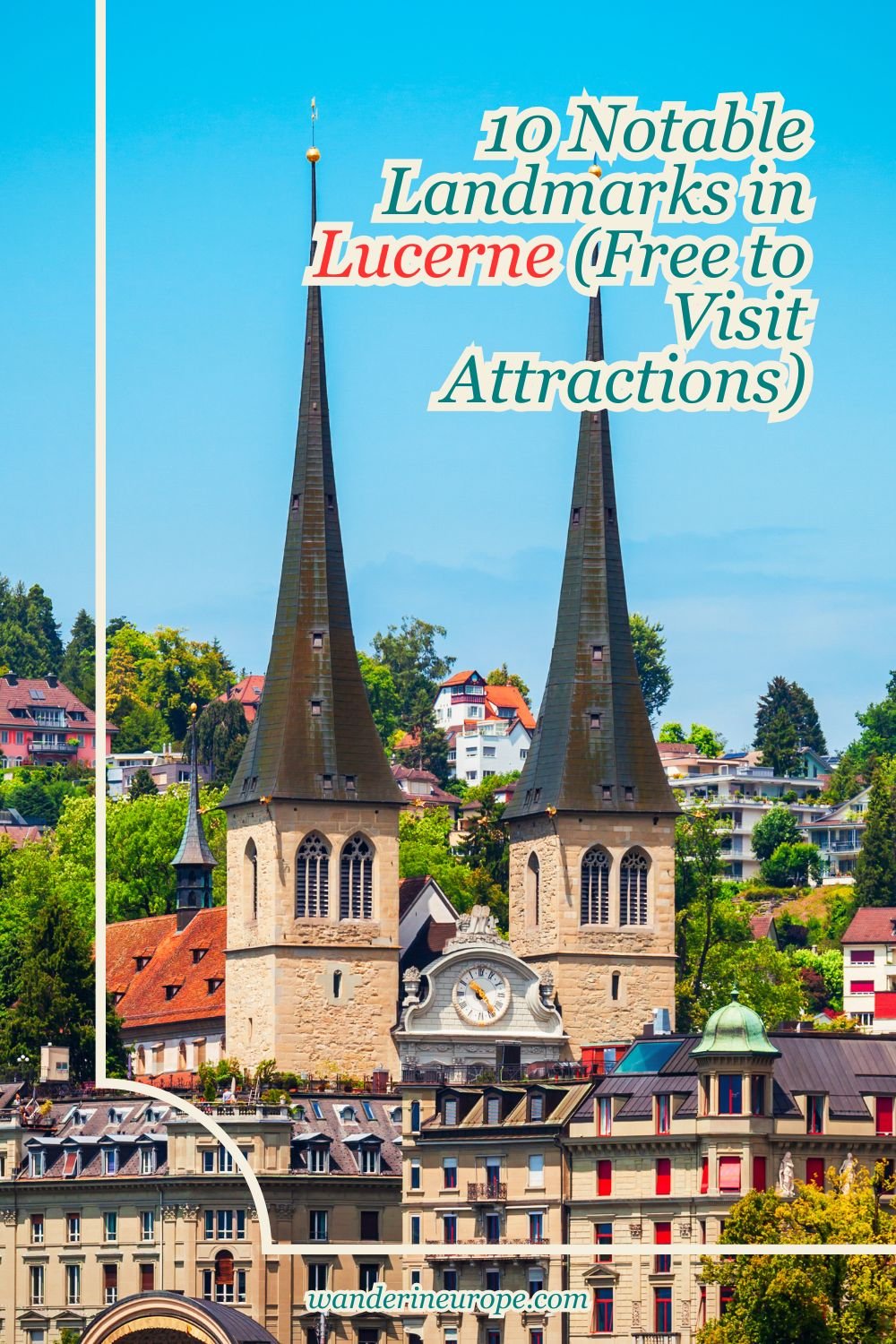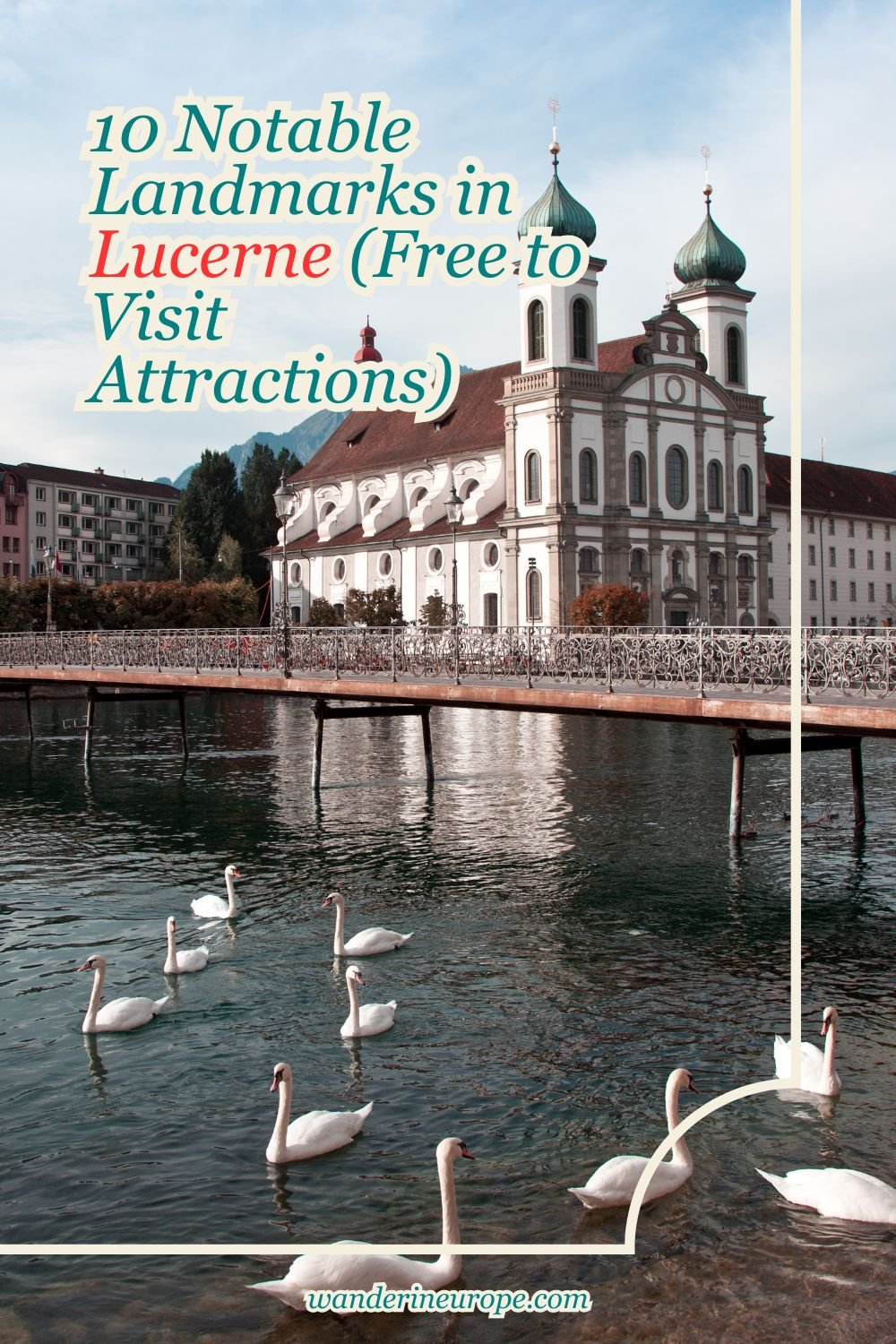10 Notable Landmarks in Lucerne (Free to Visit Attractions)
WanderInEurope is reader-supported. Affiliate links and ads help us keep creating useful content for you.
Nestled in the foothills of the Swiss Alps and adjacent to a lake, Lucerne had my expectations soaring. And you know what? It didn’t disappoint. It even went above and beyond my expectations!
Lucerne offers more than just stunning natural scenery. It’s filled with beautiful things and unique experiences. From the historical triangular gable paintings to a museum that houses all sorts of transportation vehicles, there’s plenty to see and visit. Especially if you’re a bit of a wanderer, Lucerne should have you doing cartwheels of excitement! This city boasts beautiful, picturesque landmarks that you can visit for free — the perfect destinations for explorers!
Surely, the ones you’ll find in Old Town Lucerne are not to be missed on a walking tour of the city. There are historical sites dating back to the medieval ages, world-renowned monuments, and simple houses all adorned with murals.

1. Lucerne Station
Did you know that upon arriving by train, you can already see a beautiful landmark in Lucerne? This landmark is called Torbogen Luzern. It should be visible immediately after you emerge from the train station via the escalator. However, its beauty only becomes obvious after you walk across it and view its northern facade.

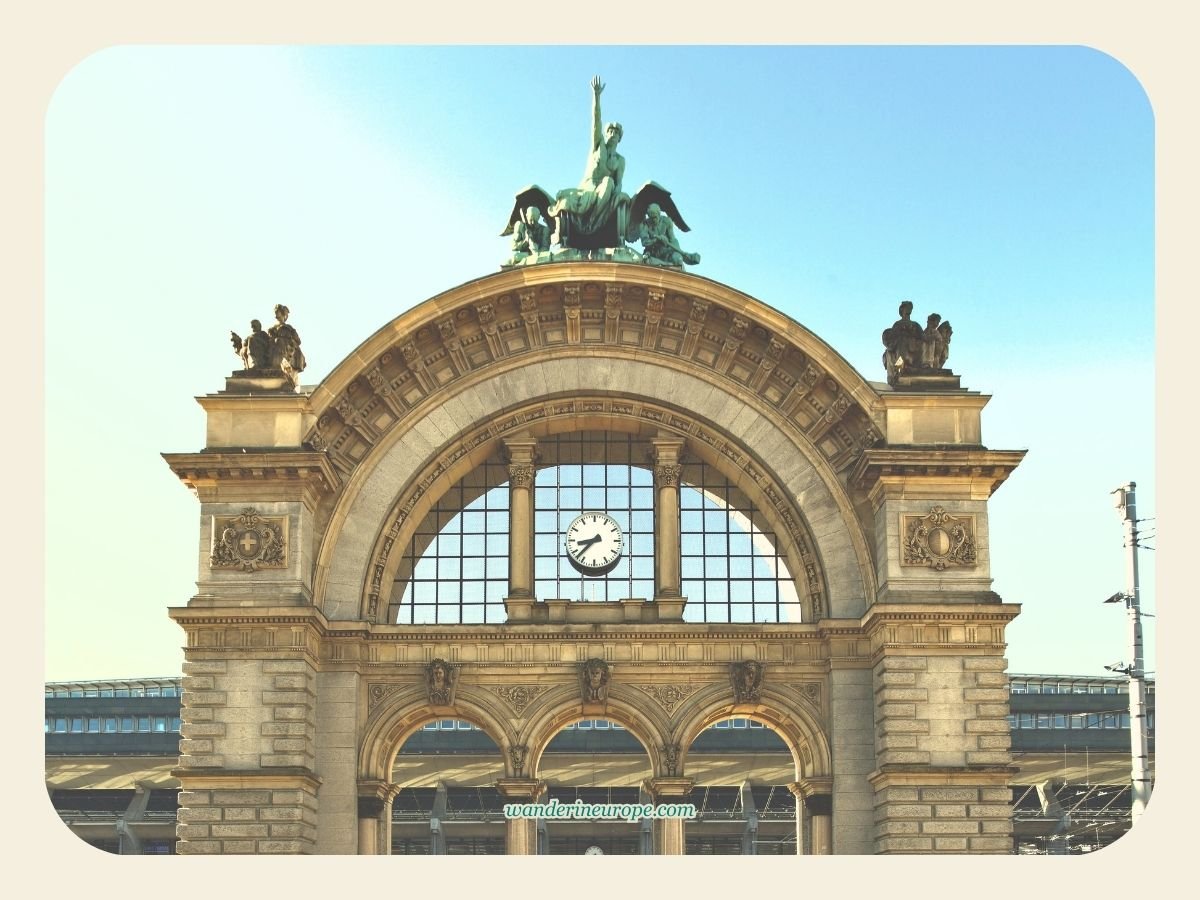

2. Chapel Bridge
Why do I like Lucerne as a tourist destination? Its famous landmarks and the city’s points of interest are all within walking distance of each other. Want an example? Suppose you’re at Lucerne Archway (the train station). From there, the Chapel Bridge, Lucerne’s most famous landmark, is less than a 5-minute walk away. In fact, you can spot the Chapel Bridge just a few steps from Lucerne Archway!


3. Rathaus
Once you reach the Chapel Bridge, I bet you’d agree that the view of the houses along the Reuss River is an architectural feast for the eyes. Beautiful buildings stand on both of its banks.
For the most panoramic views of the old city and the Reuss River, I suggest going to Seebrücke. Once you’re in Seebrücke and start marveling at the skyline of old town Lucerne, a building that will capture your attention is Lucerne’s Town Hall or Rathaus. Its clock tower dominates the view when looking at the right side of the river.



4. Jesuit Church
Let’s say you are currently in Rathaussteg, and you are having one of the loveliest strolls in Lucerne, taking photos of Rathaus. If you turn around, you’ll see another beautiful landmark—it’s called the Jesuit Church. Your quest for the most intricate architectural masterpiece in Lucerne ends there, if you’re also an architecture enthusiast like me. It’s not pretty much apparent from its facade and exteriors, but once you enter, you’ll agree!


5. Spreuer Bridge
If you walk west from the Jesuit Church through Reusssteg, you’ll arrive at the Spreuer Bridge in approximately 5 minutes. Like the Chapel Bridge, Spreuer Bridge is a covered wooden bridge unique to Lucerne. Spreuer, or the Chaff bridge, is the shorter version of the Chapel Bridge; one of the three bridges that connect the two parts of the old city divided by the Reuss River. (The third bridge is called the Court Bridge, dismantled in the 19th century).


6. Musegg Wall
From the Spreuer Bridge, you can spot another landmark in Lucerne looking west. This landmark is called the Musegg Wall. It’s Lucerne’s medieval city fortification, dating back to the 14th century. For some, Musegg Wall is the hidden gem tourist attraction in Lucerne. No wonder why, because of its location in the northernmost part of the old city.


7. Lion Monument
For history lovers, the Lion Monument is the landmark you should prioritize. As a memorial, it holds immense historical value that one can discover in Lucerne. Also known as the Lion of Lucerne, it is a massive sculpture carved out of sandstone rock in the early 19th century. It depicts a lion lying on its side with a solemn expression on its face.

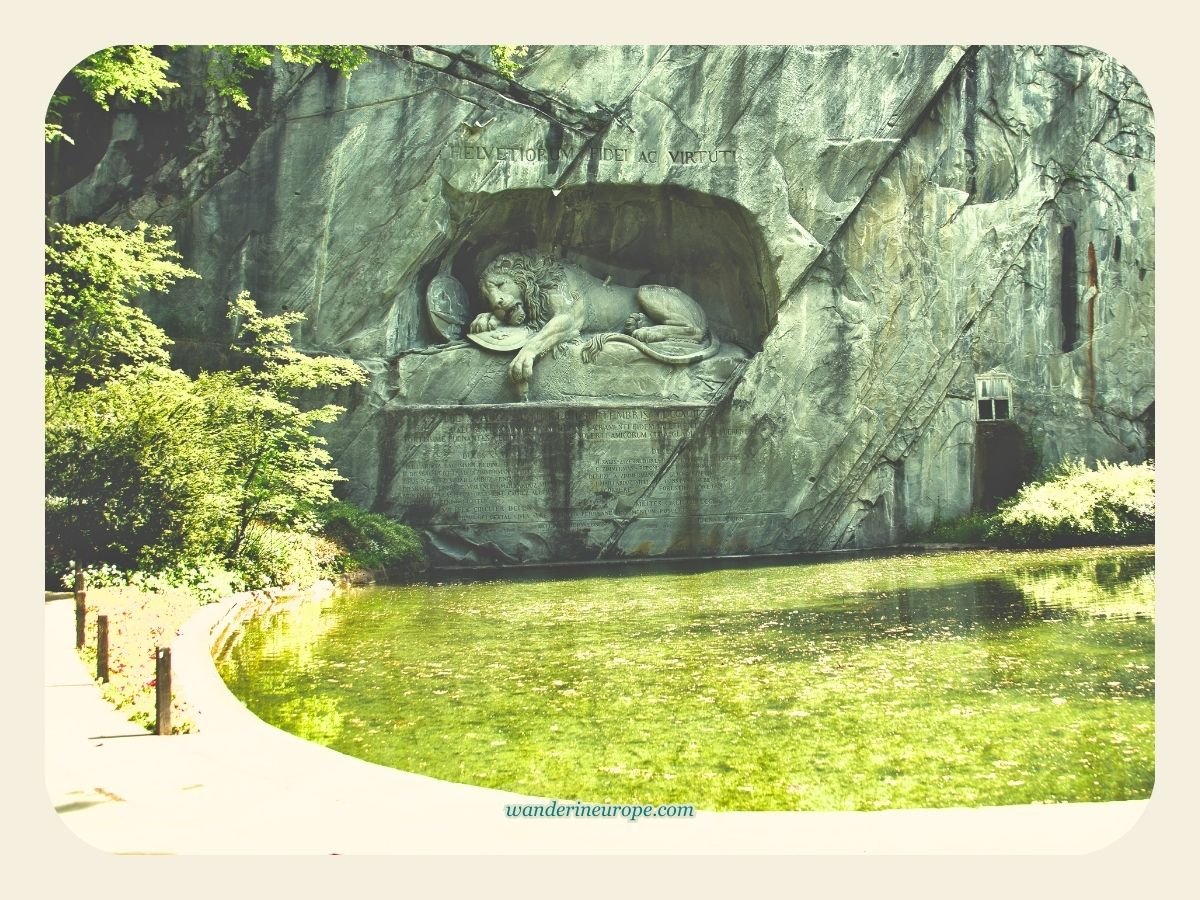

The Lion of Lucerne is also a memorial to the Swiss soldiers who died during the French Revolution. It offers a poignant reminder of the sacrifices made by these brave soldiers. With the appearance of the lion and the message it holds, many consider it one of the most moving and powerful monuments in Switzerland. Even Mark Twain agrees with it in his book, “A Tramp Abroad.”
8. Church of Saint Leodegar
With its pointed twin spires dominating the skyline of Lucerne over the lake, it’s the Church of Saint Leodegar that you’ll surely notice when sightseeing around Lake Lucerne. I believe the Church of Saint Leodegar is also one of the most picturesque landmarks in Lucerne due to its imposing facade. This church’s facade combines Gothic and German Renaissance styles, making it uniquely elegant.


9. Houses in Old Town Lucerne
At this point, I have mentioned all the major landmarks in Lucerne’s old town. However, there are more buildings that you need to see! These are the houses in the old town Lucerne, and I consider them the gems we can discover during a trip to Lucerne.
What makes the houses in Lucerne’s old town special? It’s their elaborate facades, adorned with murals and paintings. I believe these murals are called Lüftlmalerei, an alpine tradition of painting house facades with pictures depicting the owner’s occupation or favorite saints.


10. Meggenhorn Castle
I’ll complete this list of beautiful landmarks in Lucerne with Meggenhorn Castle. It’s a castle located in Meggen, a municipality within the district of Lucerne.
Based on its fairytale appearance, I consider it the most “magical landmark” you can visit during your trip to Lucerne. Meggenhorn Castle is also the most idyllic among the places and landmarks in Lucerne that I previously enumerated. Situated almost on the tip of a peninsula on Lake Lucerne, its idyllic setting will undoubtedly make you feel calm and relaxed.


From great hotel deals to skip-the-line tickets and affordable eSim to cheap rentals, click here for the best hotel deals and more travel discounts.
For a convenient, unique, or more enriching visit, check out these experiences and services:

More in Lucerne
Lucerne is the perfect city for me. It has a medieval feel, a beautiful setting, and easy access to the Swiss Alps. If you ever visit, don’t skip any of the unique experiences or the incredible sights that make this place so special! See for yourself why I think Lucerne is my favorite.
Resources
For the precise location of these landmarks in Lucerne, you can refer to my map of Old Town Lucerne or use the links to Google Maps and official websites provided below.
- Bridges in Lucerne
- Spreuer Bridge (Wikipedia)
- Kanzeli Meggenhorn (Google Map)
- Schloss Meggenhorn (official website)
- Weinmarkt (Google Maps)
- Hirschenplatz (Google Maps)
- Sternenplatz (Google Maps)

Pin this to save it for later or bookmark it to read anytime.


